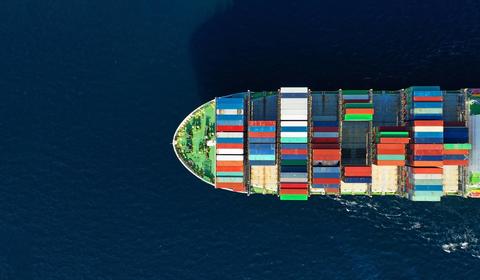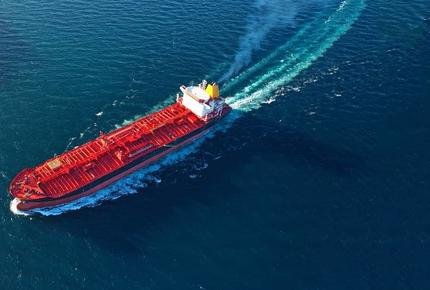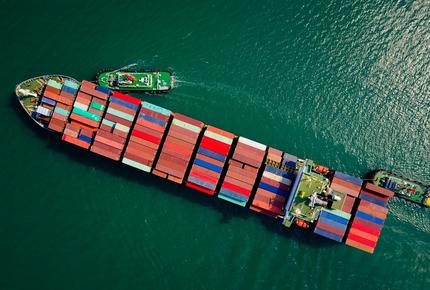
Energy modeling is a key component to achieving compliance with stricter IMO carbon indexes
The International Maritime Organization’s (IMO) Carbon Intensity Indicator (CII) comes into effect in January 2023. In response, shipowners must quickly reduce the carbon intensity of their vessels to show continuous improvement and remain compliant.
Energy modeling enables owners to weigh their options and make the smartest decisions to optimize energy efficiency and take an active role in the energy transition. Through proper energy modeling, ship operators can develop a Ship Energy Efficiency Management Plan (SEEMP) before the CII becomes the standard measure.
Energy modeling provides key information to shipowners, helping them make critical business decisions. It helps them gauge the ROI and benefits of different ship designs and upgrades, and it can also predict a vessel’s performance prior to actual operations. This latter point is particularly important to shipowners, as they must comply with new International Maritime Organization (IMO) carbon emissions targets.
What is energy modeling?
The energy modeling process involves three steps:
- Ship owners provide data required to properly model the vessel. This includes data from machinery (e.g., main engines, gensets) and data linked to energy needs (e.g., hull resistance).
- The energy modeling service provider runs a simulation specific to the ship’s operating profile (e.g., speed, sailing phases) that accounts for possible environmental variables a ship may encounter while at sea.
- The service provider prepares a report and presents their findings to the client, using the simulation results to help the client make decisions about their vessel or fleet.
Ship managers and owners then weigh the costs and benefits of new ship designs or technologies, and alternative ship operations, particularly focusing on how these would impact a ship’s performance in terms of energy consumption and GHG emissions. Energy modeling is thus a pathway to creating clarity so that shipowners can achieve compliance and make the right decisions for their fleet.
The compliance challenge posed by CII
The CII is a new IMO index, and its purpose is to steer ships closer to Paris Agreement targets. Once it comes into effect in 2023, the CII will be used to rate ships on a 5-grade scale: A, B, C, D and E. Ship design upgrades or significant operational improvements will be required of any vessels receiving a “D” rating three years in a row or for vessels receiving a grade of “E” during any annual review. As a result, shipowners are racing to determine their vessels’ carbon intensity profiles and optimize their SEEMP by the end of 2022.
CII ratings make energy modeling more important than ever. Such modeling helps owners forecast up to which date their vessel will be compliant with regulations, and at what point they will need to decrease speed or undertake other technical or operational measures to remain compliant.
One example is the case of gas carriers with steam turbines, which are inefficient when sailing at slow speeds. There are just a few hundred around the world, and many have outdated designs. They will find it hard to meet the new IMO targets and achieve efficiency simply by implementing tried and true methods, such as decreasing speed.
A good energy modeler can work with this, helping ship owners identify new designs and equipment that can make the vessel more efficient. Once it is clear that action must be taken to achieve compliance, shipowners can use energy modeling to determine which solutions make the most sense for their particular vessel and business situation.
Fueling the global energy transition
The IMO’s decarbonization objectives are demanding. As a result, efforts must extend beyond making vessels more efficient. Analyzing results from energy modeling, an expert ship energy modeling engineer can suggest the best ways to make sure owners and operators are heading in the right direction. Solutions include new fuels, wind-assisted propulsion, and innovative ways of producing energy onboard.
Energy modeling techniques can run simulations for all kinds of vessels and provide valuable information for a range of cutting-edge technologies. These include:
- Electric and hybrid-electric ships
- Engines that run on new fuels (e.g., ammonia, ethanol, hydrogen)
- Kites and sails for wind assistance
- Air lubrification systems
- Energy-saving devices for hulls and machinery
The more shipowners understand about how new technologies and alternative fuels will affect compliance and operations, the easier it will be for them to make informed, strategic decisions for their fleets.
The best in maritime energy modeling
Bureau Veritas Solutions M&O provides comprehensive energy modeling services to support energy efficiency, the energy transition, and compliance with IMO indexes such as the CII.
Innovative tools like our SEECAT ship energy modeling tool help simulate scenarios utilizing different propulsion techniques, energy-saving devices and hull optimization methods that can improve efficiency. Our dedicated teams at Bureau Veritas have long worked on the SEECAT tool, continuously improving it for over a decade to ensure it remains a cutting-edge, industry-leading modeling tool.
Clients also trust Bureau Veritas’ energy modeling because it is reinforced by other areas of expertise. For example, our energy modeling is integrated with our hydrodynamic evaluations and our OptiRoute R&D project, which uses digital twin technology and real-time data to determine optimal shipping routes. Energy modeling can also be used in tandem with weather routing technologies, enabling experts to determine optimal shipping routes based on real environmental conditions.
Thanks to our longstanding expertise in energy modeling, fleet owners gain a quick, accurate understanding of vessel optimization benefits. This charts a path to compliance and smarter, greener operations.
Head of Maritime Energy Transition Advisory Team
BV Solutions M&O
Energy modeling creates visibility and clarity for shipowners. This empowers them to take smart, progressive actions for their fleets and the environment.


